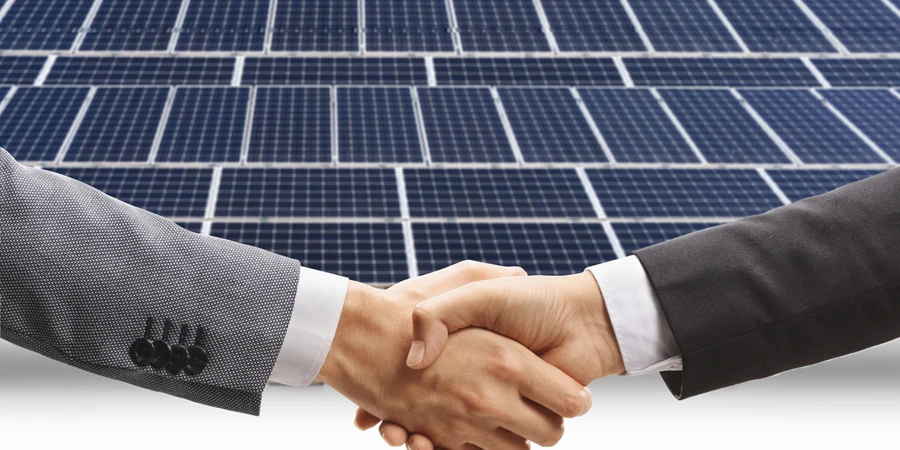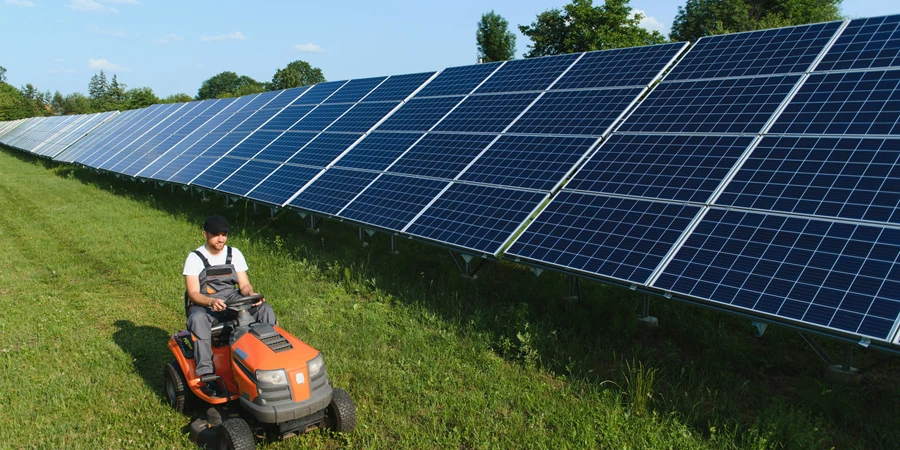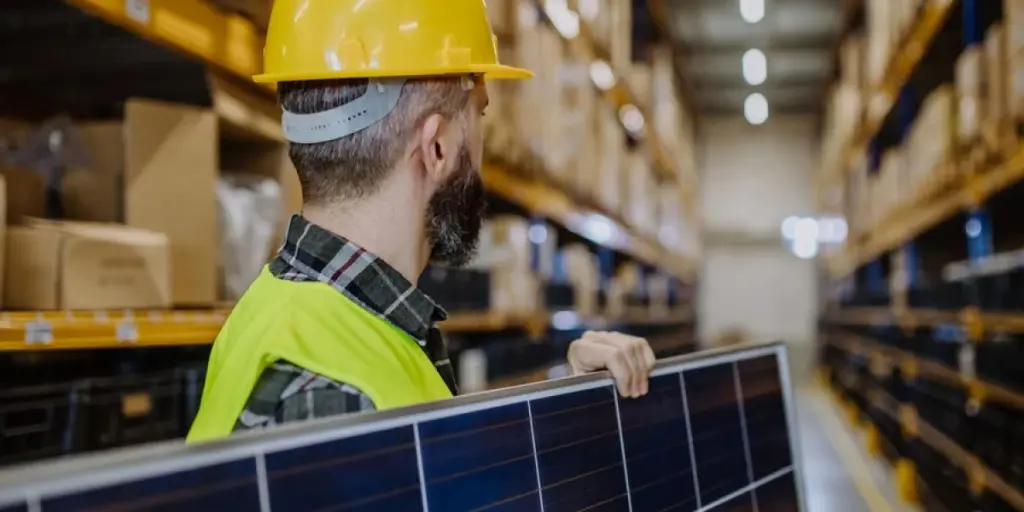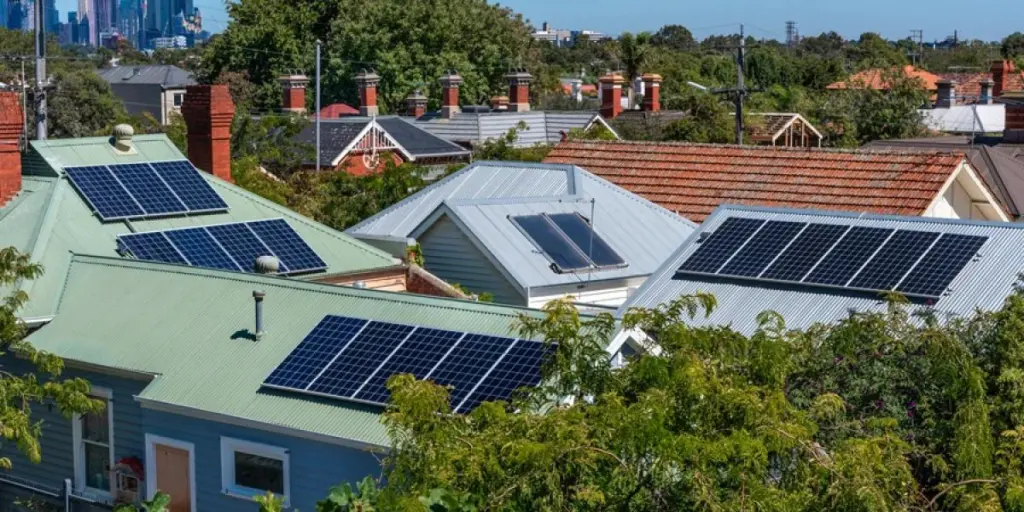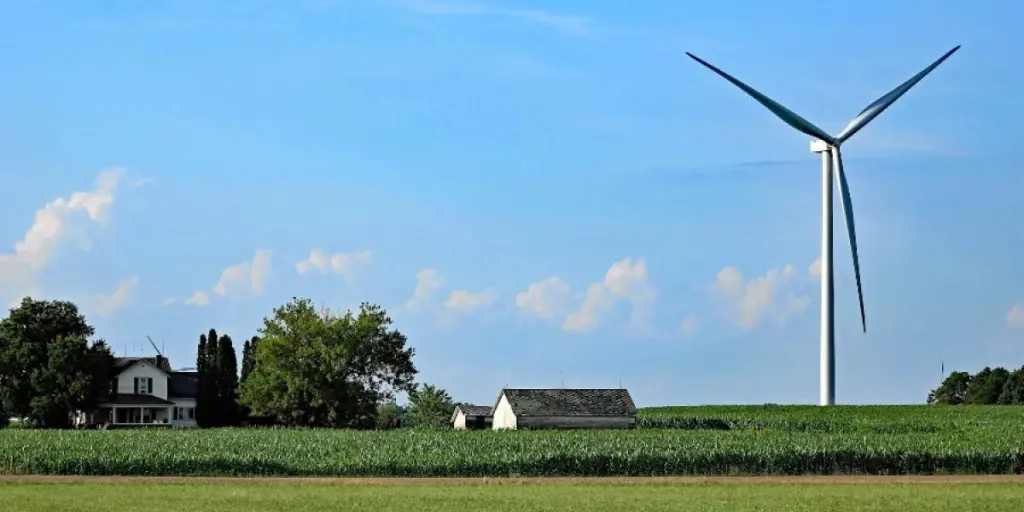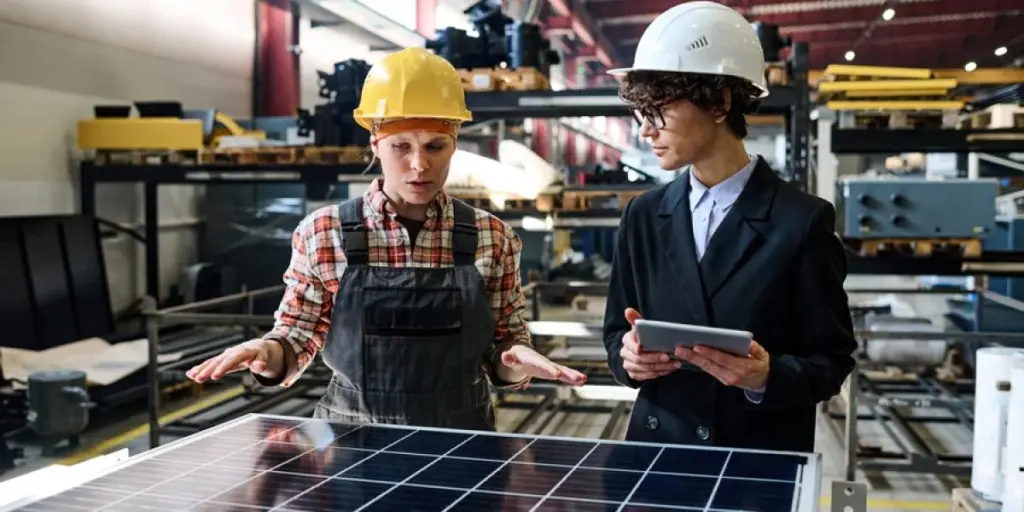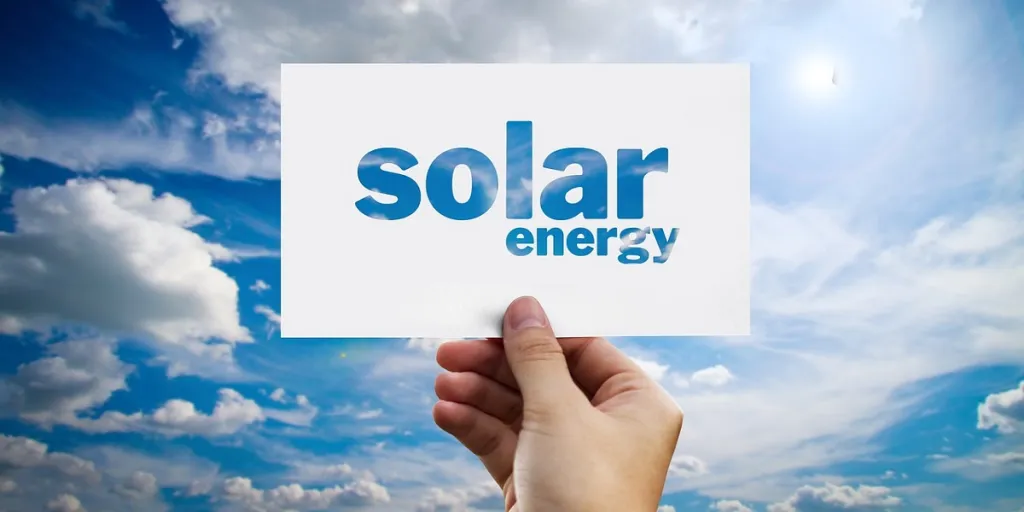Solar power plants play a crucial role in harnessing renewable energy from the sun, providing a sustainable and eco-friendly power source.
As green, renewable energy takes global center stage, businesses and individuals are shifting focus to producing their own energy. Solar power plants offer a unique opportunity to generate electricity independently, ranging from small-scale to utility-scale operations.
If you’re considering building a solar power plant, here are six essential tips to guide you through the process.
Table of Contents
What do solar power plants do?
How does a solar power plant work?
6 tips to help you build a solar energy power plant
The cost of building a solar power plant
Wrapping up
What do solar power plants do?
Before delving into the tips, it’s important to understand the primary function of solar power plants. These facilities are designed to convert sunlight into electricity.
Solar power plants typically refer to larger installations that generate electricity for communities or even entire regions. However, smaller rooftop solar projects also play a crucial role in the renewable energy ecosystem.
Utility-scale solar energy farms contribute significantly to reducing reliance on non-renewable energy sources and mitigating the impact of climate change.
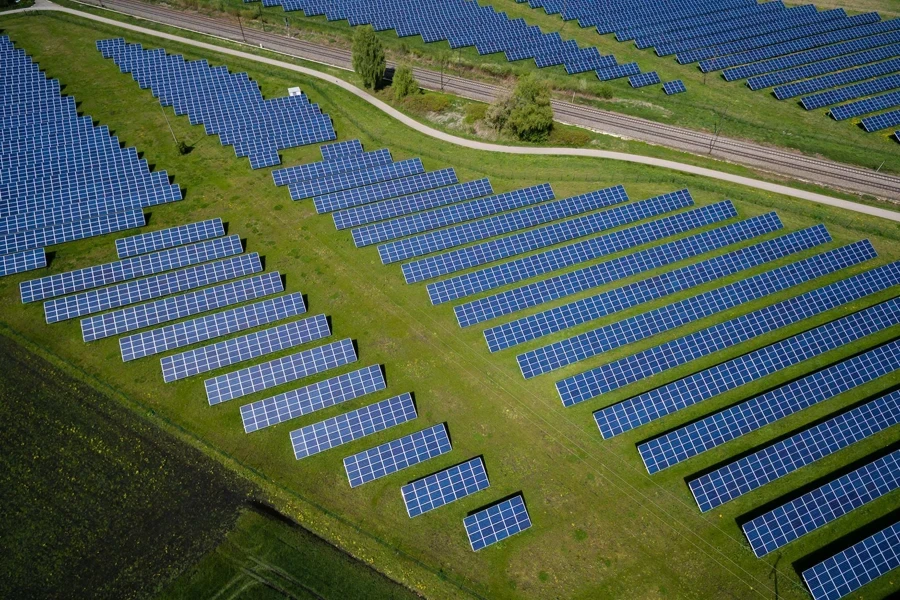
How does a solar power plant work?
It’s fundamental to understand the basic principles of solar energy generation to build a successful solar power farm.
In essence, a solar power plant captures sunlight through photovoltaic (PV) panels or solar thermal systems. Then, PV panels convert sunlight directly into electricity, while solar thermal systems use sunlight to heat a fluid that produces steam, driving turbines to generate electricity.
Solar energy capture
There are two basic ways in which solar power plants capture solar energy:
- Photovoltaic (PV) panels: Most solar power plants use PV panels or solar panels, which contain solar cells made of semiconductor materials like silicon. When sunlight strikes these cells, it excites electrons, creating an electric current. This direct conversion of sunlight into electricity is the basis of photovoltaic technology.
- Solar thermal systems: Alternatively, some solar power plants use solar thermal systems. These systems focus sunlight onto a small area, typically using mirrors or lenses. The concentrated sunlight heats a fluid (such as oil or water) to produce steam, which then drives turbines connected to generators, ultimately generating electricity.
Solar power plant components
In addition to PV panels or a solar thermal system, a power plant will also have the following critical components:
- Inverters: In a PV system, inverters convert the direct current (DC) produced by solar panels into alternating current (AC). AC is the standard form of electricity used in power grids and most appliances.
- Tracking systems: Solar power plants often use tracking systems to follow the sun’s movement across the sky. This maximizes the sunlight the solar panels or mirrors capture, increasing overall energy output.
- Energy storage: Most large-scale solar power plants incorporate energy storage systems like batteries to store excess energy generated during peak sunlight hours. This stored energy can then be used during periods of low sunlight or high energy demand.

6 tips to help you build a solar energy power plant
Carefully select your site
To produce a wealth of electricity from solar energy, you’ll need to choose a location with optimal sunlight exposure and minimal shading.
For this, conduct a thorough assessment of the solar resource potential in the area to maximize energy production.
- Optimal sunlight exposure: Choose a location with high and consistent sunlight exposure throughout the year. Conduct a solar resource assessment to determine the potential energy production at different times and seasons.
- Shading analysis: Thoroughly analyze the shading at your chosen site. Identify and mitigate any potential obstructions, such as buildings or trees, that could cast shadows on the solar panels.
Select the right technology
Once you know your site and objectives for the solar plant, choose the appropriate solar technology. The first decision you’ll need to make is whether you opt for PV panels or a solar thermal system. Consider factors such as efficiency, reliability, and maintenance requirements when choosing between the two.
PV panel efficiency will depend on the angle of sunlight and temperature variations. If you go with solar panels for your plant, choose the ones well-suited for your site’s specific climate and conditions.
Alternatively, if opting for solar thermal systems, carefully design the system to optimize the concentration of sunlight. Evaluate the efficiency of mirrors or lenses in focusing sunlight onto the receiver to ensure maximum energy capture.
Comply with local regulations
Navigate the regulatory landscape to ensure local, state, and federal compliance. Typically, you’ll need to obtain the necessary permits and approvals before construction.
Depending on your location, you may need to identify regulations at different government levels. For example, in the United States, there may be local, state, and federal legislature around solar power plants. Verify the different land use policies, safety standards, and other details before finalizing the plans for your solar farm.
You may also want to consider the wider community in your area when building the project. Foster positive relationships with the local community by communicating project details, addressing concerns, and involving stakeholders in the decision-making process. Community support can be crucial for smooth project implementation.
Assess the environmental impact
Conduct a comprehensive environmental impact assessment to minimize the ecological footprint of your solar power plant. Since the end goal is to reduce your carbon footprint, it’s critical to implement sustainable practices and consider the long-term effects on local ecosystems.
Comprehensive ecological surveys will help you assess the impact of the solar power plant on local flora and fauna. Using the collected data, you can minimize ecosystem disruption. If the solar thermal system involves water for cooling, pay close attention to water conservation measures as well.
Hash out the financial details
Develop a detailed financial plan that includes the cost of equipment, construction, and ongoing maintenance. Explore available incentives, grants, and financing options to make your solar power plant economically viable.
Collaborate with experts
Engage experienced professionals throughout project implementation. This can include engineers, environmental consultants, and project managers. Collaborating with experts will streamline the construction process, address challenges, and ensure the long-term success of your solar power plant.
If you are building a utility-scale power plant, you’ll need to work with a multidisciplinary team. Vet your contractors and suppliers to make sure they are reliable and professional.
Once the project is set up, invest in ongoing training for the project team to stay updated on the latest technologies, safety protocols, and industry standards. This will equip your team with the ability to address challenges and optimize the long-term performance of the solar power plant.
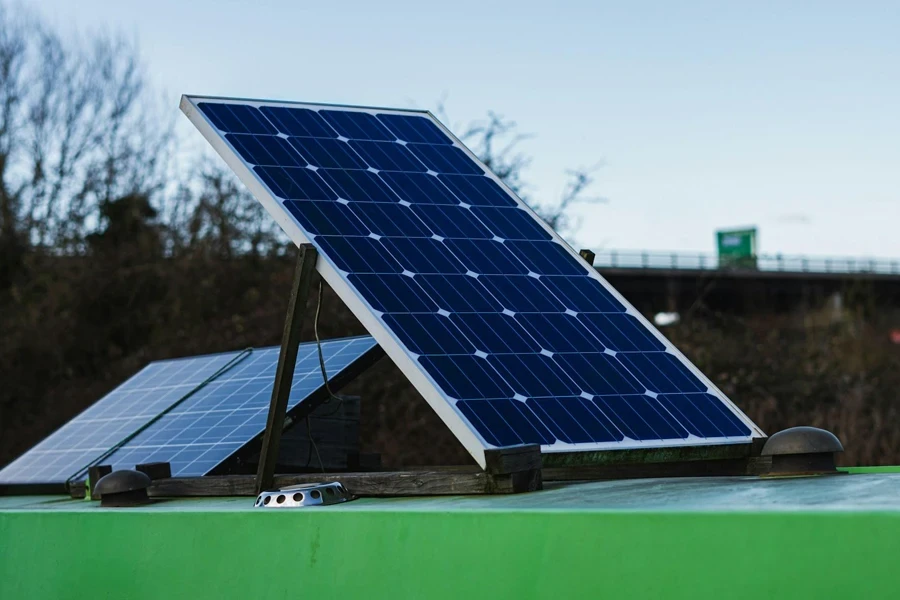
The cost of building a solar power plant
There are many factors that affect the cost of building a solar power plant. Everything from project size, location, and technology will impact the bottom line. Usually, the initial investment will represent the biggest cost factor. However, over time, you’ll see a return on investment because you’ll save on electricity and can even make money back by selling energy to the power grid.
Here are some of the costs you’ll need to consider:
- Solar panels or thermal components: Budget for high-quality PV panels based on efficiency and quantity. In a solar thermal system, you’ll need to think about the cost of mirrors, lenses, receivers, and associated infrastructure.
- Inverters: These devices convert DC to AC for grid integration.
- Transformers: If you will connect your plant to the power grid, you’ll need to budget for transformers.
- Land, site prep, and development: Carefully evaluate expenses for acquiring suitable land. Budget for clearing, grading, and preparing the site for construction. You’ll also need to allocate money for site surveys, environmental assessments, and land improvements.
- Labor and installation: Estimate for construction and installation labor, including panel assembly and site preparation.
- Permits and compliance: You may need to pay fees to obtain regulatory permits. Depending on the complexity of your project, you may also need to budget for legal and consulting services.
- Ongoing maintenance and insurance: In addition to start-up costs, consider a long-term budget for routine maintenance, inspections, and repairs.

Wrapping up
Building a successful solar power plant requires careful planning, adherence to regulations, and a commitment to environmental responsibility. By following these six tips, you can navigate the complexities of solar power plant construction and contribute to a cleaner, greener future powered by renewable energy.
Want to know more about solar energy and renewables? Read the Alibaba.com blog for the latest in solar.

